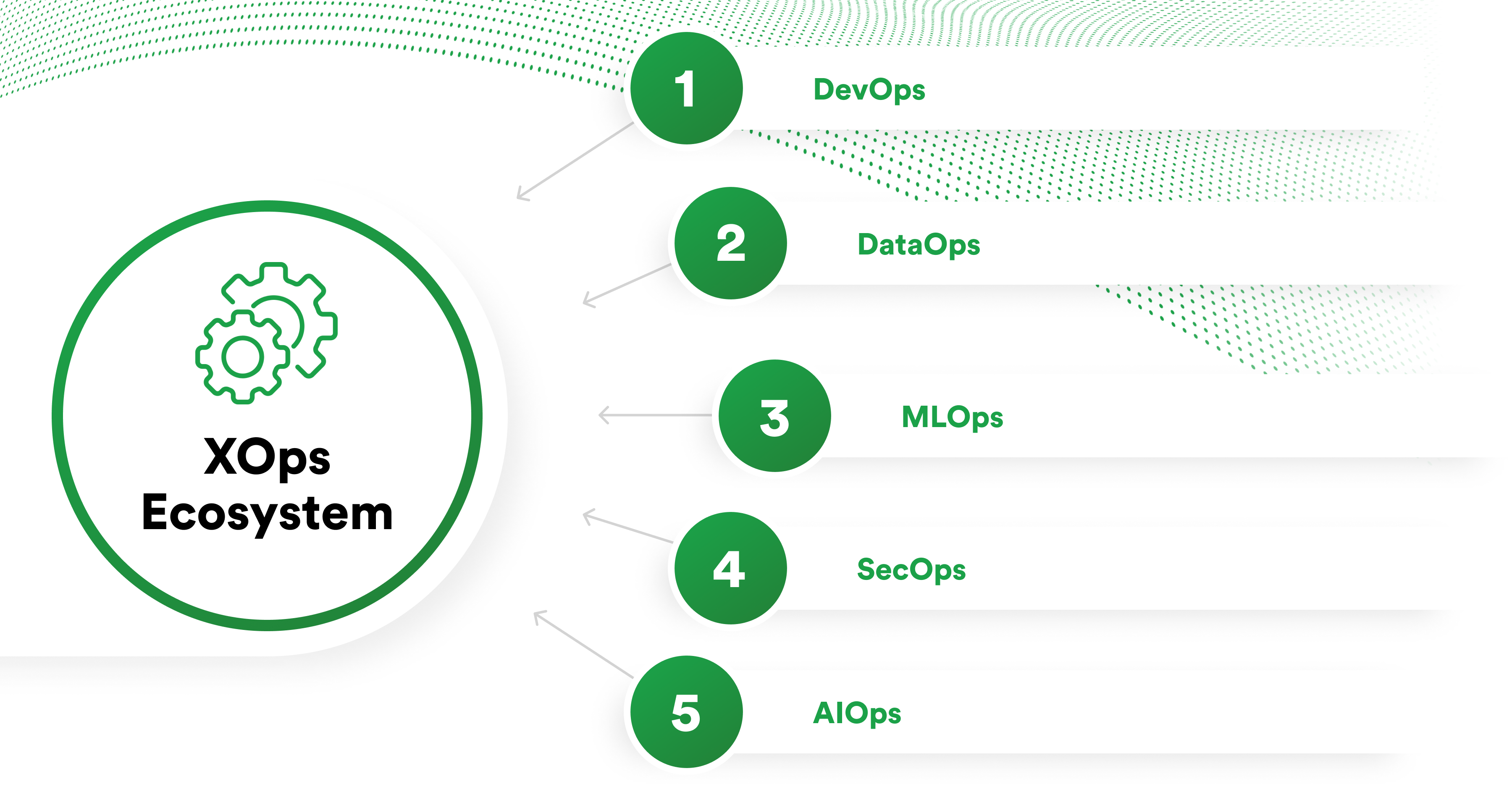A unified XOps strategy thrives on a core set of principles that help organizations align their IT operations with business goals. These principles are not just technical frameworks. They reflect a cultural and strategic shift that promotes agility, resilience, and collaboration across every enterprise layer.
1. Automation Across All “Ops” Disciplines
Automation is the backbone of XOps. It enables teams to streamline repetitive, error-prone tasks across development, data processing, machine learning, security, and IT infrastructure management. By adopting end-to-end automation, from code deployment and model retraining to incident response and compliance reporting, enterprises can dramatically increase efficiency, reduce human errors, and ensure consistent outcomes. According to a report by McKinsey, automation can reduce IT operations workload by up to 30% and decrease resolution time by 75% for repetitive issues.
2. Standardized Processes and Tools
Standardization ensures that all teams, regardless of their functional focus, operate using compatible tools, shared processes, and agreed-upon best practices. Without this, organizations often suffer from “tool sprawl,” where disconnected technologies and inconsistent methodologies lead to confusion, inefficiency, and high integration costs. By establishing centralized governance over tools and processes, XOps reduces team friction and improves interoperability. This standardization is critical for scaling operations, simplifying onboarding, and ensuring compliance across increasingly complex environments.
3. Data-Driven Decision-Making
At the heart of XOps is a commitment to data-centricity. Each discipline, whether it’s DevOps monitoring metrics, DataOps quality benchmarks, or AIOps anomaly detection, produces vast amounts of operational data. XOps leverages this data collectively to inform intelligent, proactive decision-making. Real-time dashboards, predictive analytics, and ML-powered insights enable organizations to act on early warning signs, optimize resource allocation, and continuously improve service delivery. According to a study by McKinsey & Company, companies that prioritize data are 23 times more likely to attract new customers, six times better at keeping them, and 19 times more likely to be profitable.
4. Cross-Functional Collaboration
One of the primary objectives of XOps is to foster collaboration between previously siloed teams. Development, data, security, and operations professionals must now work together throughout the entire lifecycle of digital products and services. Shared objectives, unified communication channels, and integrated workflows support this culture of collaboration. By breaking down organizational barriers, XOps enables faster feedback loops, greater accountability, and a collective focus on customer outcomes.
5. Integrated Security (SecOps by Design)
In an age of rising cyber threats and strict compliance requirements, security can no longer be bolted on at the end of the development cycle. XOps incorporates security into every operational layer, embedding threat detection, risk management, and policy enforcement into automated pipelines. Known as “Shift Left” security, this approach ensures vulnerabilities are addressed early and continuously throughout development and operations. According to IBM’s Cost of a Data Breach report, organizations with fully integrated security practices reduced breach costs by over $1 million compared to those with siloed security.








